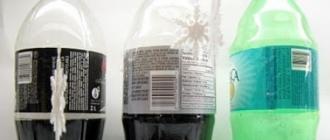Since he will spend quite a long time in it, it is necessary to approach her choice with all responsibility. The dimensions of the stroller, its weight, its maneuverability and, finally, its appearance, must fully satisfy the needs of both the child and the parents.
There are several main criteria by which the future stroller is most often chosen. Now we will consider them in more detail.
Model: stroller-transformer or block stroller.
There are a number of advantages to both options. At first it looks like a regular newborn model, but it can easily take on the look of a stroller with a "sitting" position. It can be used from birth up to 3 years. The transformer has an adjustable back, footrest, hood, it is also possible to put on or take off the foot cover. The advantage of this model is the flip handle, which allows you to turn the child away from the wind in a matter of seconds. The package also includes: a carry cot, a bag for mom, a rain cover and a mosquito net. The weight of such a stroller starts from 13 kg.
The second type of stroller is called because it consists of one, two or three interchangeable blocks, which are alternately attached to the frame, depending on the situation.
The first block is a cradle. It is used from birth to 6 months (approximately), has a large hood, a warm cover for the legs, an additional mattress.
The second block is for walking. It is used when the baby begins to sit and no longer fits in the first block - the cradle. The walking version of the stroller can be used up to 3 years, the backrest is adjustable in several positions, including "lying", there is also a large hood and a cover for the legs.
The third block is a car seat 0-13 kg. Used from birth to one year old. Easily attaches to car and frame. A block-type stroller is taller, more maneuverable and more spacious than a transforming stroller, which of course affects its cost. The weight of this model is higher than that of some transforming strollers, but its plus is that it is not necessary to lift the entire stroller at once, you can first bring in the removable block, and then the frame.

Block (modular) stroller
Classic frame or swivel wheels.
The classic frame consists of 4 wheels of the same size, not swivel. This design improves cross-country ability, which is especially important in the winter season, or if your walks are not on very good roads. The frame with swivel wheels also includes 4 wheels, 2 of which rotate 360 degrees. This improves the maneuverability of the stroller. For better maneuverability, the swivel wheels can be fixed in one position.
Both frames are found on transforming strollers and on block models. When choosing, be based on the terrain on which you will make walks.


Classic frame Frame with swivel wheels
Baby stroller wheel size and material.
The size of the wheels depends on the weather conditions and the road. Small wheels are most often found on and, as they are used in the warm season. Large wheels are relevant for strollers from birth - block and transformers. They are more reliable and better overcome obstacles.
The wheels themselves can be made of rubber, rubber with a chamber or rubber without a chamber (foamed rubber inside). The first ones are lighter, do not require pumping and are used in the configuration of transforming strollers. The disadvantage of this material is poor depreciation. Rubber inflatable wheels can be found on all models - they need pumping, are heavier, but provide a smooth ride. The advantage of rubber non-inflatable wheels is puncture protection, they do not need to be pumped up, but just like rubber ones, they do not have very good cushioning.



Rubber wheel Inflatable rubber wheel Non-inflatable rubber wheel
Depreciation on a baby stroller.
Why is it so important that it be good? The fact is that if you drive on a rough road on hard depreciation or without it at all, the baby will shake very much. This will affect not only his sleep, but also his bones, which are just being formed and an extra shake is not very useful for them. Also, poor cushioning will reduce the life of your stroller. In our store, strollers are presented with spring depreciation, which can be adjusted from hard to soft.

Baby carrier.
An additional advantage of the stroller is the presence of a carry cot. Firstly, the baby will be warmer in it during the cool season, and secondly, in the cradle it is more convenient to get him out of the stroller if he suddenly fell asleep. In transforming strollers, such a carrying is included, and for block models 2in1 and 3in1, instead of carrying, you can use the first block or infant carrier.
You can also purchase separately in our store.

Carrycot Carrycot Carrycot
A good stroller should include a warm footmuff and a bag for mom to put all the baby items she might need while walking. The package may also include: , cup holder, carrying, shopping basket.

We hope we have answered your questions:
- how to choose a baby stroller
- which stroller to choose for a newborn in winter
- which stroller is better
- stroller models
- what is a stroller
- what is a pushchair
- what is a modular stroller
- what is a classic frame
- what are swivel wheels
- what is the best frame for baby stroller
- what should be the depreciation of a baby stroller
- What material should baby stroller wheels be made of?
- what is the lightest stroller
In this article, we will talk about scooters and footbikes, consider the design of a city scooter, and also decide on the details that you should pay attention to when buying.
When choosing a scooter, the first step is to decide on the main scenario for its use: frequent movement around the city, walks on weekends or, for example, playing sports. The number of scooter models is growing every year, in some cases it is worth choosing universal models, and in others - scooters designed to solve specific problems. To begin with, we will talk about what scooters are.
The design of the scooter is based on the frame, deck (platform), wheels and steering wheel. The characteristics of these basic elements may change, but the way a scooter is propelled by a person, namely pushing off the ground, remains unchanged.
Among the two-wheeled vehicles, which are commonly called "scooters", two large categories can now be distinguished - scooters and footbikes(scooters), in each of which it is also possible to divide according to various characteristics.
scooters
A scooter is a compact vehicle on wheels with a diameter of 100 to 270 mm. We single out three main groups of scooters that can be found on sale.
Stunt scooters
The most important qualities of such scooters are durability and lightness. They are equipped with wheels with a diameter of not more than 125 millimeters, a small deck and a fixed-sized steering wheel. It is best to ride such scooters in skate parks, but moving around the city for long distances will not be very comfortable.
City scooters
The main function of such models is to move around the city, so manufacturers are doing everything to increase the level of comfort. The wheels of urban scooters are large - from 150 to 270 millimeters, they provide not only high speed, but also the ability to overcome cracks in the asphalt, tiles and curbs. The presence of shock absorbers, flexible decks or inflatable wheels is designed to minimize vibrations when moving on different types pavement, and constantly improving folding systems - to simplify the movement of the scooter in public spaces and in public transport. It is important to remember that city scooters are not designed to perform tricks, additional loads shorten their service life.
Dirt scooters
The best place to ride is gravel paths, slopes and dirt parks with jumps where you can perform tricks. These are off-road scooters, they are comparable in size to older city models, but they are distinguished by wide inflatable wheels, a solid construction and the absence of a folding mechanism. On such a scooter, you can drive everywhere, however, due to inflatable wheels and a lot of weight, you will have to make much more effort.
Scooters: stunt, city, off-road.
On sale, you can find models of scooters that borrow parts from other types: for example, a city scooter with a fixed handlebar or a folding stunt scooter. It is important to remember that these are compromise technical solutions that directly affect the main purpose of the scooter.
We also note that every year various unusual types of scooters appear, the way of movement on which is somewhat different from the classic one: inertial, drift scooters, pedal scooters and stepper scooters. Riding on such scooters, it seems to us, lies in the field of leisure activities, so we will not dwell on them in detail.
Footbikes
Footbikes are different O large frame sizes, inflatable wheels, as well as the presence of bicycle components (forks, handlebars, wheels, brakes). The footbike allows you to push off less often and cover longer distances. For the sake of this, compactness will have to be sacrificed.
The division into segments among footbikes is similar to the division for bicycles and is primarily related to the scope of their application - there are footbikes for various sports disciplines (road, cross-country, downhill and others), as well as universal walking models. A variety of frames and the possibility of using bicycle components allow you to assemble a footbike for specific tasks and fine-tune it. Compact urban models of footbikes have smaller wheels, and some are equipped with a folding mechanism, but their dimensions and folded weight are still greater than those of city scooters.
Footbikes: sports and pleasure.
For your car, we have already said. At the same time, many, in pursuit of their own goals, choose wheels as larger, but normal daily operation dictates its own conditions: they should be kept in factory settings. Why not install wheels larger than factory ones?
What does "more factory" mean?
First, let's define what the phrase "more factory" means. The fact is that for almost all cars, manufacturers offer several options for the dimensions of rims and tires: each of these options is approved by the manufacturer, as it has been tested and means not only the physical ability to install the wheels on the car, but also the optimal operating parameters. Thus, if you bought a car with 15-inch wheels, but the manufacturer offers 17-inch wheels in a different configuration, you can install these on your car yourself without fear negative consequences. However, before installation, you should definitely check the allowable wheel sizes for your car in the owner's manual to make sure that it is technically feasible and to choose the right wheel and tire size.
When we say “more factory”, we mean, first of all, wheels whose size exceeds the parameters recommended by the manufacturer. It is these "experiments" that affect performance. However, even if you act within the limits permitted by the manufacturer, you can’t deceive physics, and installing 17-inch wheels instead of 15-inch ones, of course, will not go unnoticed either - much of what will be listed below will be true in this case too.
We also define that a wheel is a ready-to-install element assembly, consisting of a tire and a rim. And "increase" in this sense is a multi-valued concept: after all, an increase in the diameter of the disk does not necessarily mean an increase in the diameter of the wheel. Let's figure it out in order.
What is harmful installation of large disks?
First of all, larger diameter discs tend to have more weight - and therefore, grows. A heavier wheel is more difficult for the engine to spin - that is, fuel consumption will become higher, and dynamics will be worse. In addition, an increase in unsprung mass also affects the suspension resource - it is designed for a certain load, limited by standard wheels.
An increase in the diameter of the disc is usually accompanied by an increase in its width, as well as a change in offset (the depth of the disc in the wheel arch). This changes the parameters of the wheel bearings, increasing the load on them, and significantly reduces their life. Depending on the degree of deviation of the parameters from the standard bearings, the bearings can last 20-30% less, or they can “crumble” literally every few thousand kilometers.
Well, now let's move on from disks to tires - after all, increasing the diameter of the disk also changes the parameters of the installed tires.
What's wrong with big tires?
The weight-to-size rule also applies to tyres: as a rule, larger-diameter tires have more weight added to the wheel assembly and total unsprung weight.
The second disadvantage is that in the vast majority of cases, the increase in the diameter of the disk occurs due to a decrease in the profile of the tire: that is, in order for new large disks to fit into the arch, they need to be put on lower-profile rubber. Well, a decrease in the profile is a deterioration in the smoothness of the ride and the overall comfort of the car. In addition, a thinner tire absorbs shock loads worse and transfers them further - to the disk and suspension. Thus, driving on low-profile tires on imperfect roads means a reduction in the life of the suspension and disks and a corresponding increase in operating costs, including for tires, the risk of damage to which increases with a decrease in profile.
Yes, another indirect, but still a drawback is the financial side of the issue. More money will have to be paid not only for new wheels, but also for rubber for them, and for tire fitting, and for the potential repair of a low-profile tire.
Well, among the unpleasant consequences, one can mention a change in the accuracy of the speedometer readings: initially, speedometers are usually set to slightly overestimate the readings relative to the actual speed, and with a gradual increase in the diameter of the wheel, it will first become more accurate, and then will “lie” more and more. In addition, with an increase in the width of the tire, its tendency to.
Are there any advantages to installing large wheels?
Of course, an increase in the diameter of the wheel does not mean continuous flaws, there are also positive sides. For example, larger wheels mean more ground clearance, as well as an increase in top speed, as a larger wheel travels more distance in one revolution. Increasing the width of the rubber means an increase in the contact patch with the road and, accordingly, grip with it - this improves the car's handling and cornering speed.
According to the letter of the law
One of the main disadvantages of non-standard large wheels is that they are simply prohibited by law. The technical regulations of the Customs Union in terms of tires and disks allowed for installation are simple and adamant: only those that “comply with the recommendations of the operational documentation of vehicle manufacturers” are allowed.
In addition, it should be remembered that the same technical regulations prohibit the so-called "welding" - disks of increased width, welded from several "stampings". Firstly, they are tritely unsafe, since they have a non-factory design, and secondly, the technical regulations do not allow "the presence of cracks on the discs and wheel rims, traces of their elimination by welding."
A rare young mother, when choosing a stroller, looks at the wheels. We are interested in color, different features of the stroller, its convenience. In addition, they all ride great in the store. But as soon as you go outside, it turns out: our wheels and asphalt are not made for each other. So which wheels should you choose?
Let's first see what kind of wheelchairs there are in general.
Air, foam or rubber
Each of us has been familiar with air-filled wheels since our cycling childhood. Strollers with inflatable wheels usually heavier, have a smooth ride. There are two major downsides. The first is that the wheels periodically have to be pumped up (some models of strollers come with a pump). The frequency is different - some mothers said that they pump up every month. The second terrible minus (due to which I chose a stroller with different wheels twice) is the likelihood of piercing them. For example, during the infancy of her daughter, my friend took the stroller to the tire shop three times on three wheels. Agree, a very unpleasant situation. Of course, skillfully you can patch at home. But I've always been haunted by the fear of blowing a wheel far from home and being essentially helpless. There is an opinion that wheels are more often punctured in inexpensive strollers, such as Tako, and more expensive ones are more reliable in this regard, such as Inglesina. I think there is some truth in this logic
Next wheel type - rubber. Lighter, more reliable. But! Depreciation leaves much to be desired. For an infant stroller, it is difficult to come up with such a depreciation system that would have a smooth ride with rubber wheels. If the roads are uneven, the baby will shake. It happened to us, it really upset me.
The third type is the middle path. Wheels filled with foam (foam rubber). They cannot be pierced, but they move softer than rubber ones. There are many such wheels in European strollers. But in the conditions of our frosts, they become hard and rattle a little.
3 big wheels or 4 small wheels?
Next, decide how many wheels you want on the stroller. Three wheels - unusual, but maneuverable. 4 wheels is familiar and most of us choose this option.
Next, you need to decide for yourself whether you need swivel front wheels. They improve maneuverability, it is very convenient to go shopping, the stroller can be turned with one hand. Minus - it is difficult to go through the mud. But here, too, manufacturers offer a solution - the wheels can be blocked. All my strollers have classic wheels. And I had to tilt the wheelchair to turn around ... it seems to me - this is already the last century.
The next criterion is the size of the wheels. Many wonderful European strollers are equipped with ... no, I don’t dare to call them wheels - wheels. It is understandable: such dirt and snowdrifts as we still need to look for. Therefore, if you are buying a stroller oriented to the European market, check about the wheels and really evaluate the quality of the roads in your neighborhood. Big wheels - great maneuverability. But if you do not need to ride on rural potholes, then you can choose medium-sized wheels.
Well, I hope I managed to convey the idea of the importance of choosing wheels. Happy shopping to you and your baby!






